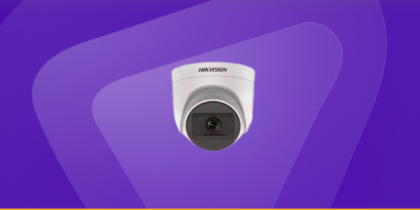Table of Contents
Synology routers are some of the most popular in the market due to their outstanding performance and features. One of the things that makes Synology routers stand out is their ability to perform CGNAT, or carrier-grade NAT. This means that your router can handle many connections and will keep your internet speeds fast and reliable. However, CGNAT makes it challenging to open ports on routers. This guide explains how you can port forward Synology routers without a hassle.
What is CGNAT?
CGNAT, or Carrier-Grade NAT, is a type of network address translation (NAT) typically used by Internet Service Providers (ISPs). CGNAT allows multiple customers to share a single public IP address. This can be useful for ISPs because it helps them conserve IP addresses. However, CGNAT can also cause problems for customers because it can make it difficult to connect to specific devices or services.
Why is Port Forwarding a problem on Synology routers
One of the problems with Port Forwarding on Synology routers is that they use something called CGNAT. This stands for Carrier-Grade Network Address Translation, meaning that your public IP address is shared with other users on the same network. This makes it impossible to directly forward ports to your device because the router doesn’t know which device to send the traffic to.
There are ways around this, but they usually involve complex workarounds beyond this article’s scope. If you need to port forward on a Synology router, your best bet is to contact your ISP and see if they can provide you with a static IP address. This will allow you to bypass CGNAT and directly forward ports to your device.
How can PureVPN help provide Port Forwarding solutions
One of the main benefits of a VPN is that it can help circumvent NAT (Network Address Translation) restrictions. This is because a VPN can create a direct, encrypted tunnel between your device and the internet.
This is especially important if you are trying to use applications or services that require a specific port to be opened on your router. Without a VPN, your ISP may be performing CGNAT (Carrier Grade Network Address Translation), which will block any attempt to open a specific port.
However, with PureVPN, you can use our Port Forwarding add-on to open any port on your router quickly. This addon will create a direct, encrypted tunnel between your device and the internet, and bypass CGNAT restrictions.
So if you need to use an application or service that requires a specific port to be open, PureVPN can help you overcome any NAT restrictions.
Frequently asked questions
Synology users must use Port Triggering, a type of inbound service. You can also use UPnP or NAT-PMP if your router supports it. If you are using a VPN, you will need to contact your VPN provider for specific instructions on how to open ports.
Yes, Synology does require Port Forwarding. Synology routers use Carrier-Grade Network Address Translation (CGNAT) technology, making it difficult for Synology users to open ports.
To open a port, Synology users have to use Port Triggering, a type of inbound service. You can also use UPnP or NAT-PMP if your router supports it. If you are using a VPN, you will need to contact your VPN provider for specific instructions on how to open ports.
Synology devices need port 80 (HTTP) and port 443 (HTTPS) open for web-based management. In addition, other ports may be required depending on which features you are using. For example, if you are using Synology’s Cloud Station service, you will need port 8001 open.
You can find a complete list of ports used by Synology devices here: https://www.synology.com/en-us/knowledgebase/DSM/tutorials/Port_Forwarding_And_Ports_Used
If you are unsure which ports you need open, you can contact the Synology support for help.
To port forward your NAS, you will need to know the IP address of your NAS and the port number you want to forward. You can find this information in the documentation for your NAS or by contacting the manufacturer.
Once you have this information, you must log in to your router. The steps for doing this vary depending on your router, but you can usually find the instructions in the documentation for your router or by contacting the manufacturer.
Once you are logged in to your router, you will need to find the port forwarding section. Again, the steps for doing this vary depending on your router, but you can usually find this information in the documentation for your router or by contacting the manufacturer.
Once you have found the Port Forwarding section, you will need to add a new rule. The steps for doing this vary depending on your router, but you will need to enter the IP address of your NAS and the port number you want to forward. You may also need to select the protocol (TCP or UDP) you wish to use.



